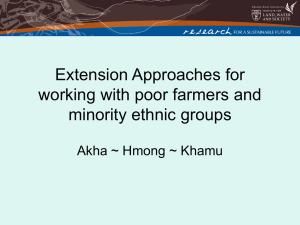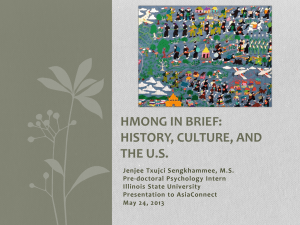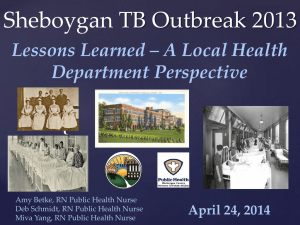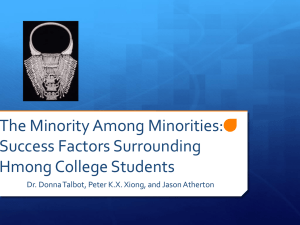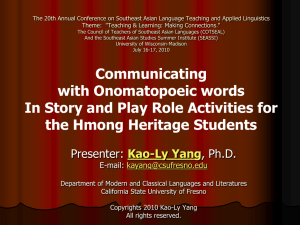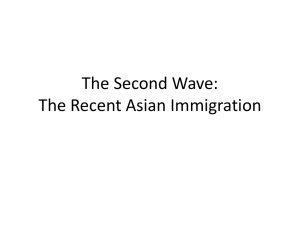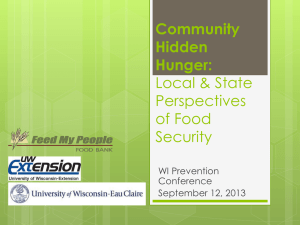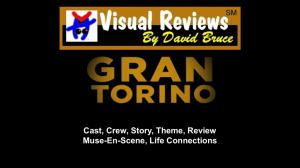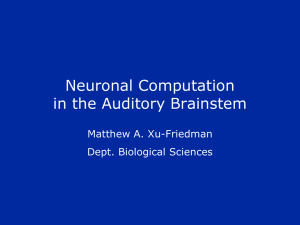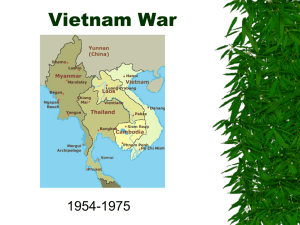Hmong Competency and Recruitment - Iowa Association for College
advertisement
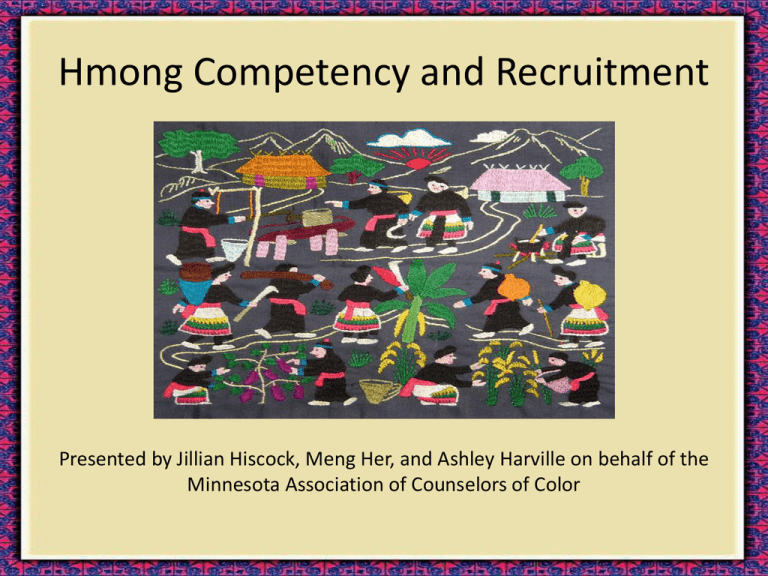
Hmong Competency and Recruitment Presented by Jillian Hiscock, Meng Her, and Ashley Harville on behalf of the Minnesota Association of Counselors of Color Introduction • Jillian Hiscock – – • President College of St Benedict/Saint John’s University Meng Her – – Chief Financial Officer University of Minnesota, Morris • Ashley Harville – Chair of Programs Committee – St Catherine University What We Will Cover • • • • • History Family Structure Gender Roles Generation Gap Hmong Pursuit of Higher Education • The Model Minority Myth and the Hmong • Tips Working with Hmong Students • Questions History • Hmong history is often tied to the Chinese • Originated in Central China – Chi-You: Believed to be the leader of the Hmong's ancestors – “Miao” is a term in China that refers to a number of minority groups including the Hmong. Hmong History Time Line Of Key Events Time Line Continued • • • • • • • 1854 – 1873, “Miao Rebellion” was crushed 1893 – French colonization of Laos 1918 – Madman’s War 1952 – Development of the Hmong Written Alphabet 1954 – French Army surrendered, ending French colonization of Indochina 1954 – Laos became independent, civil war broke out between the Royalist Army and Pathet Laos • • • • • 1961 – United States begins recruiting Hmong Warriors 1975 – United States pulled out of Vietnam, General Vang Pao left Laos 1975 to 1980 – Arrival of the first wave of Hmong into the US 1979 to 2003 – Second wave of Hmong 2000 – Hmong Veteran Naturalization Act of 2000 2004 to Present – Third wave of Hmong immigrants to the US Hmong by the Numbers • 2010 Census – 260,076 Hmong in the US • Minnesota – 66,181 • Wisconsin – 49,240 • Iowa – 534 • North Dakota – 33 • South Dakota – 94 • 30.7% ages 5-17 • 19.4% ages 18-24 • Median Age 20.4 Family Structures • Patriarchal Society – Father, Mother, Grandparents, Children by Age • Family belongs to Clans – Clan: Consisting of those persons who share the same paternal ancestry. – 18 Clans • Cha, Cheng, Chue, Fang, Hang, Her, Kang, Kong, Kue, Lee, Lor, Moua, Pha, Thao, Vang, Vue, Xiong, and Yang – Wife becomes part of husband’s clan – Self-Governing, Clan Leader and council of elders act as judge and jury to settle family disputes • Clans belong to community – Council of 18 Clans, Elected Leader and Council to settle disputes among clans Family Values • Bigger is better – High infant mortality rate – Needs the extra set of hands • Sense of belonging • Extremely competitive • Respect for age Gender Roles Male Female • Prized, Privileged, Power • Do heavy work such as chopping wood, killing and butchering, some cooking • Marry between the age of 16-20 • Men eat at separate table, or first if only one • More trust • Expected to carry the family name • Expected to go out and get educated, start business, primary income earner • Expected to learn how to sew, cook and clean on daily basis • Babysit the younger siblings • Often have to ask permission to go out, many times denied • Mother acts as the mediator between father and children • Father head of household • Expected to get married, have and raise kids • Marry between ages of 14 – 18 • Not uncommon to marry older men Hmong Pursuit of Higher Education Then • High standards • First Hmong PhD Dr. Dao Yang 1972 in France • First Hmong Women to earn PhD Dr. Dia Cha in 2000 • Boys encouraged to go to school • Girls had to go to school to gain economic power – Leads to community backlash – Too old to get married – Too independent • Divorce Rates Hmong Pursuit of Higher Education Now • 2010 Census – – – – – Male High School graduate or higher: 69.7% Female High School graduate or higher: 59.7% Male Bachelor’s Degree or higher: 14.1% Female Bachelor’s Degree or higher: 15.6% No cause for celebration: Bachelor’s Degree or higher: 11.1% • Causes for low percentage? – – – – Gang Affiliation Poverty Marriage Family • Much work needs to be done! Generation Gap • First Generation (Hmong) – FOB, HTT – Tend to abide by strict traditional values • Second Generation ( HmongAmerican) – Loosen up on traditions – Rebel • Third Generation (American Hmong) – Not very much traditions at all – What does it mean to be Hmong? – Speak Hmong? • Fourth and onward (American) – Many abide only by American values and cultural norms Model Minority Myth Misconceptions • Asians are high test takers • Asians are math and science inclined • Asians do well economically • Asians don’t need the help that other minority groups need because they are selfsufficient Hmong • Average ACT score of Hmong students: 17.7 • 1990 Census: 62% Poverty • 2000 Census: 34% Poverty • 2010 Census: 27.3% Poverty • National Average 2010 Census: 15.1% poverty rate • Did not choose to come here There is hope! • Hmong when given the opportunity excels • Poverty rate improves • Growing Businesses • Doctors and Lawyers • Increasing enrollment into college • Many have done well – – – – – Lee Pao Xiong Cy Thao Mee Moua Kou Yang Many others leading the way! Hmong Student Recruitment: How can you help? • Trust is huge issue: Recruit the whole family • Know which generation of student you are working with • Word of mouth is powerful, be known, outreach to events (New Year, etc.) • Hmong girls still have a hard time with cultural barriers • Don’t condemn girls who married early, they will leave: lack of trust • Be sensitive to cultural values – Girls clean and cook at home – Boys work to provide for family • Scholarships • Be committed to the population, know about us and we will know about you Questions? • Thank you very much for coming we will be around to answer questions. Reference • • • • • • • • • Khang, Mai S. (2010). Hmong Traditional Marital Roles and the Pursuit of Higher Education for Married Hmong American Women. Retrieved From: www2.uwstout.edu/content/lib/thesis/2010/2010khangm.pdf Lao Family Community of Minnesota Inc. (1997) Hmong Culture. Retrieved From: http://www.laofamily.org/sites/laofamily.org/files/Hmong_Culture.pdf Lao Family Community of Minnesota Inc. (1997) Hmong Family. Retrieved From: http://www.laofamily.org/sites/laofamily.org/files/Hmong_Families.pdf Lee, Stacey J. (2007). The Truth and Myth of the Model Minority: The Case of Hmong Americans. Issues in Children’s and Families Lives, Part 3, 171 – 184. McNall, M., Dunnigan, T., and Mortimer, J. T. (1994). The Educational Achievement of the St. Paul Hmong. Anthropology & Education Quarterly 25(1):44-65. American Anthropological Association. Vang, T. and Flores, J. (1999). The Hmong Americans: Identity, Conflict, and Opportunity. Multicultural Perspectives, 1(4), 9-14. Lawrence Erlbaum Associates, Inc. Watson, Dwight C. (2001). Characteristics of Hmong Immigrant Students. Childhood Education, Annual theme. Yang, Kao L. (2005). Hmong Compemporary Issues: Hmong American History Timeline. Copyright 2005 Kao-Ly Yang. Yang, Kou (2003). Hmong Americans: A Review of Felt Needs, Problems, and Community Development. Hmong Studies Journal, 2003, 4:1-23.
